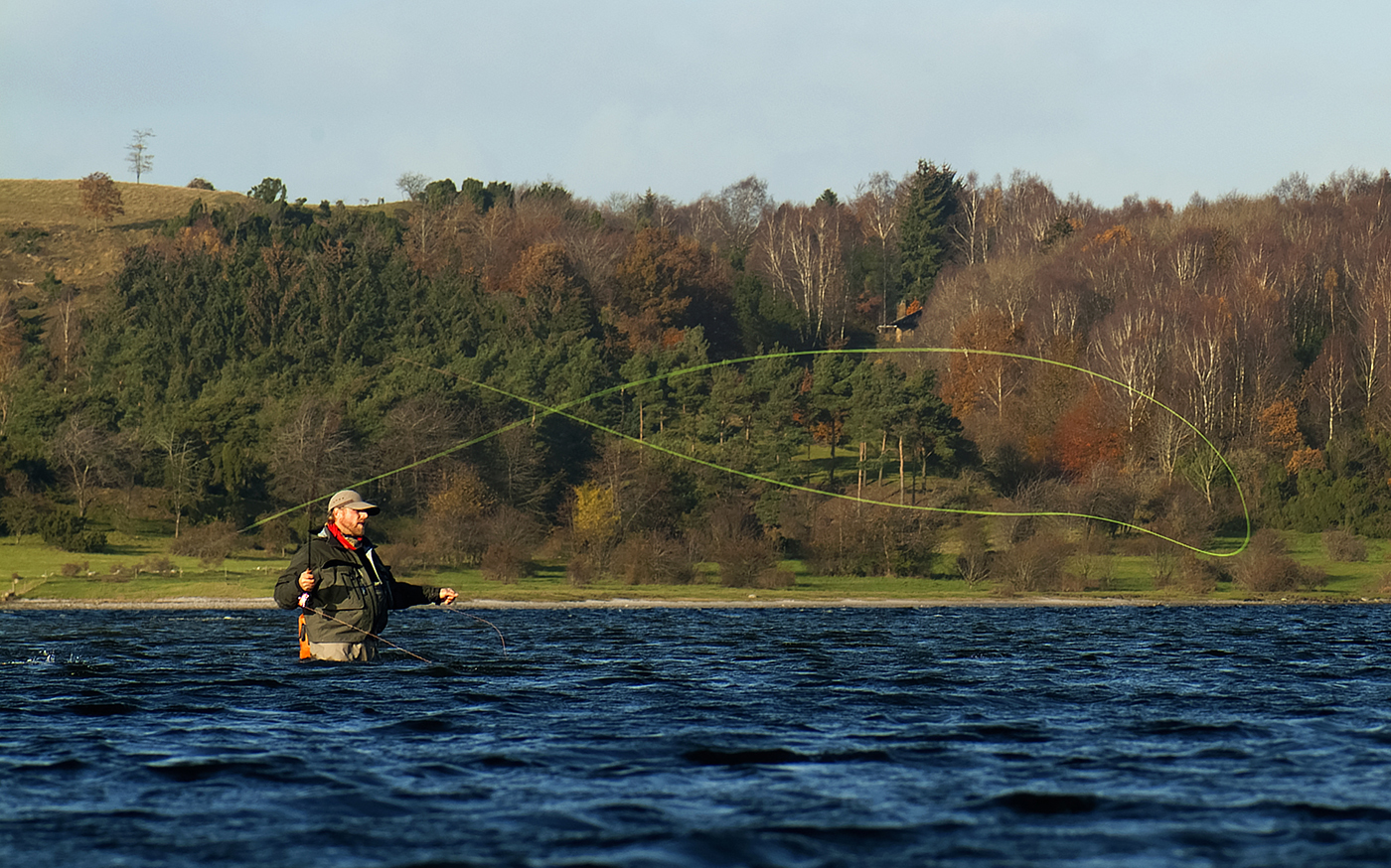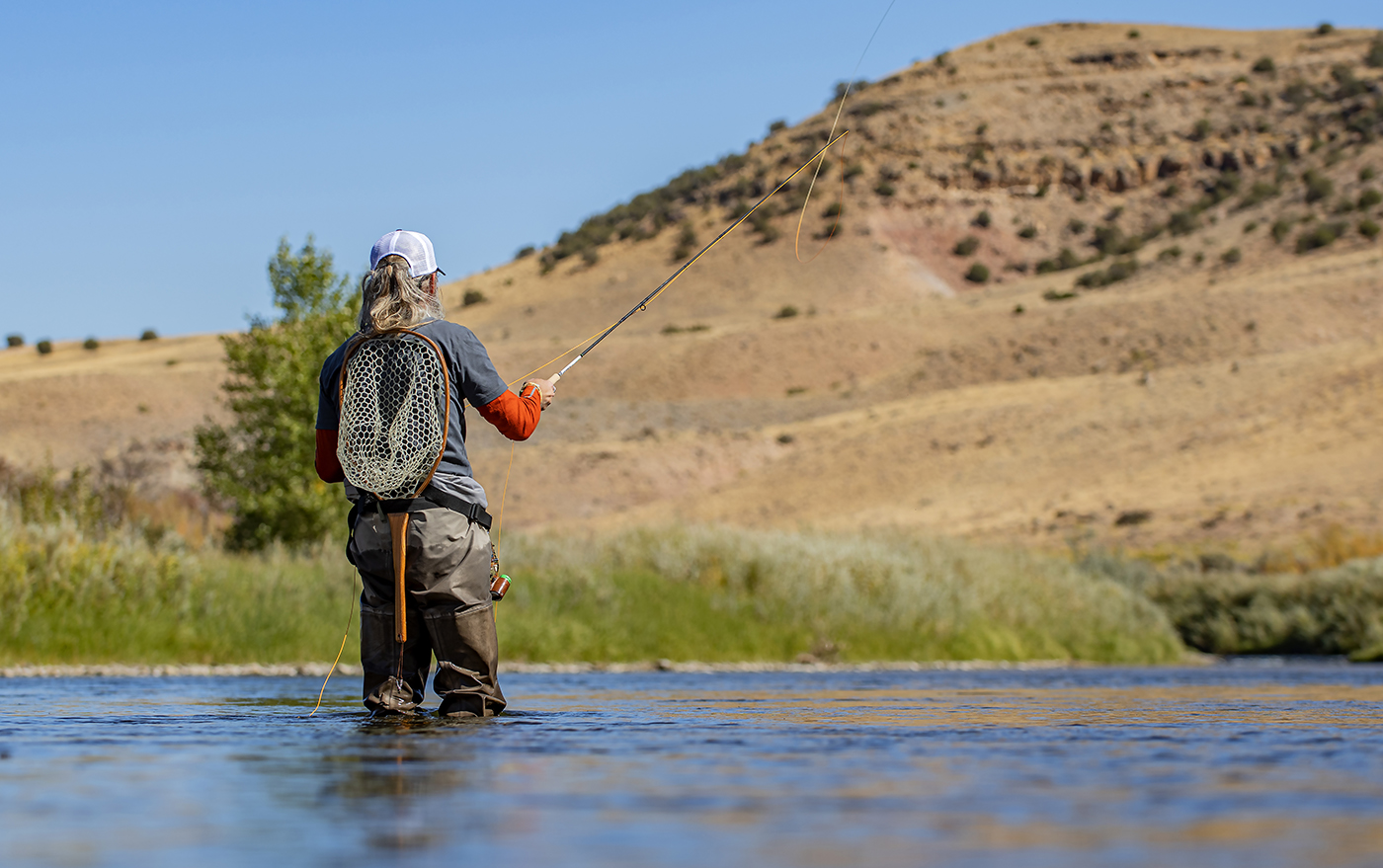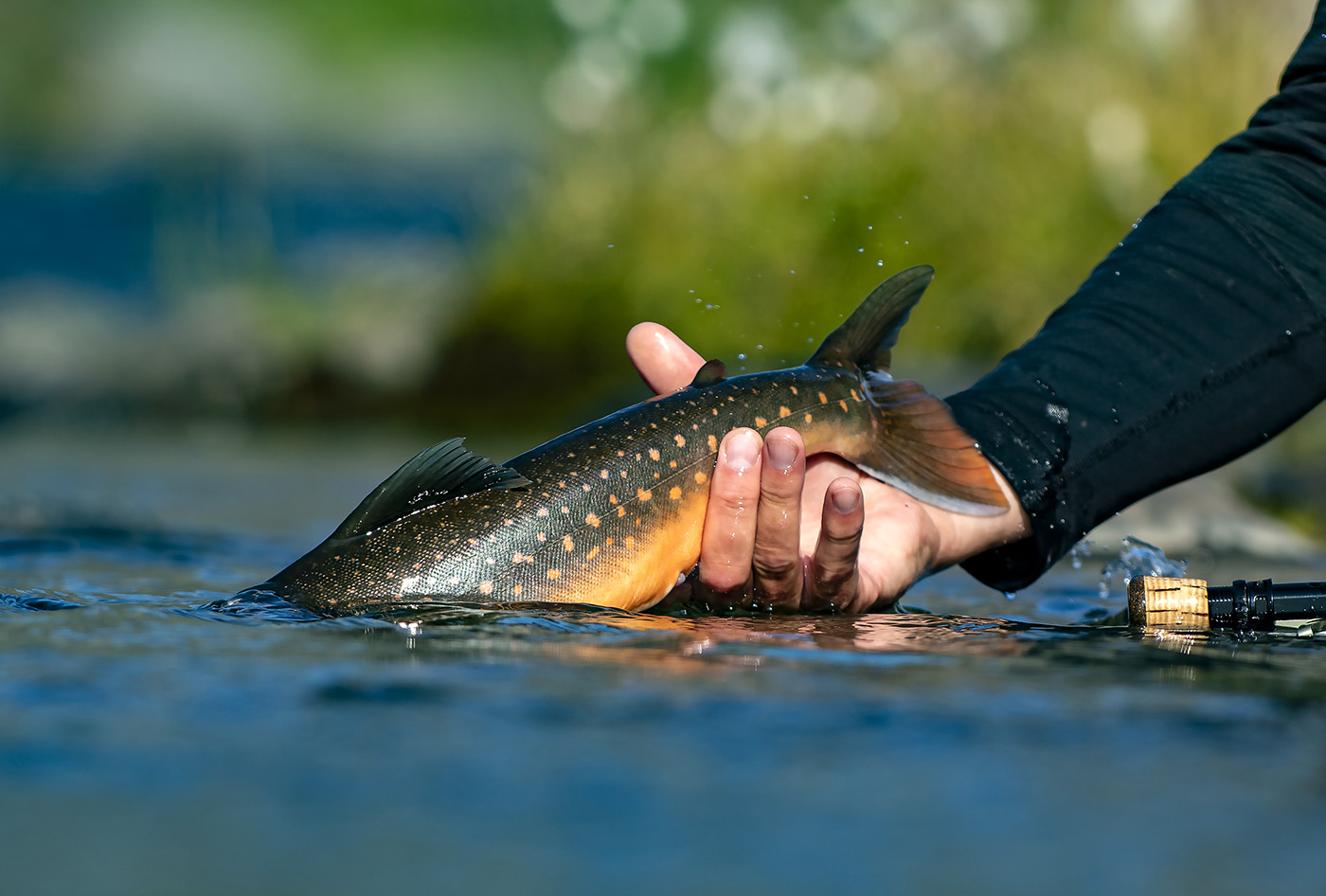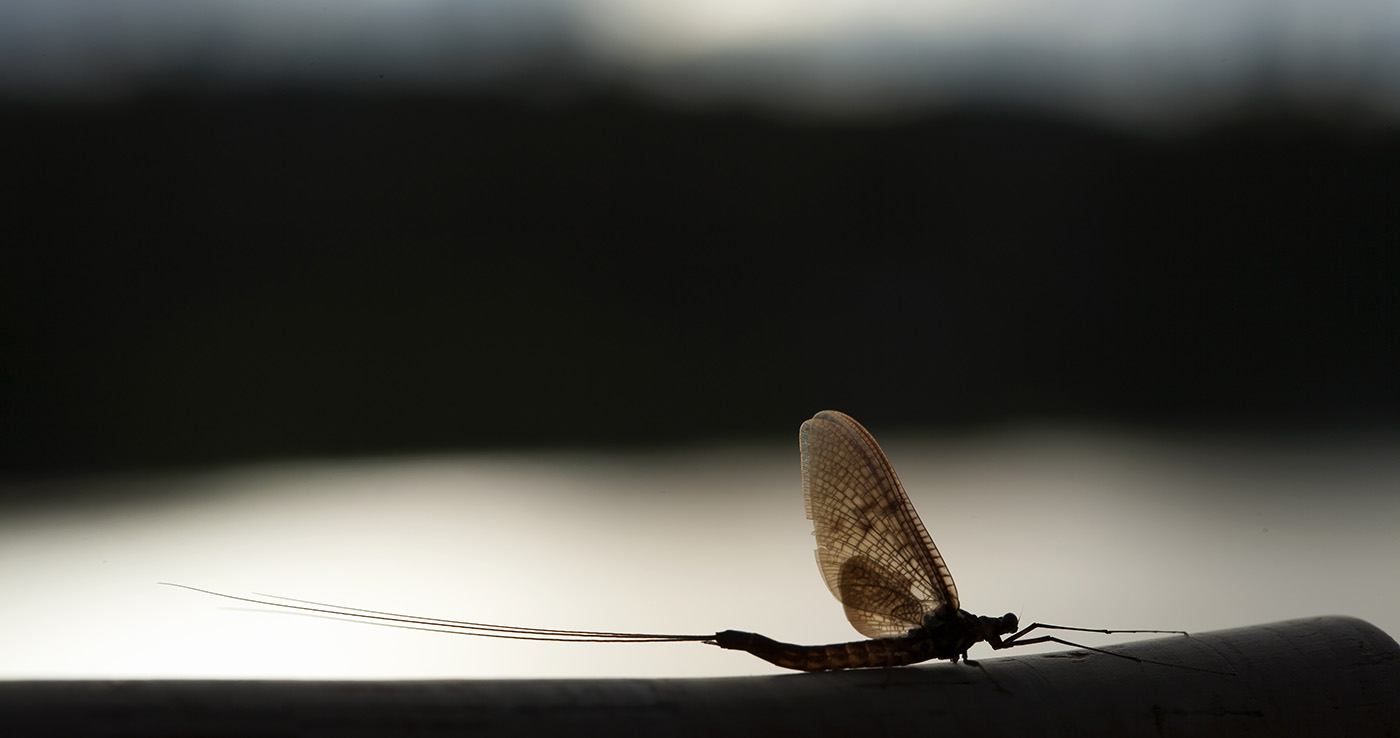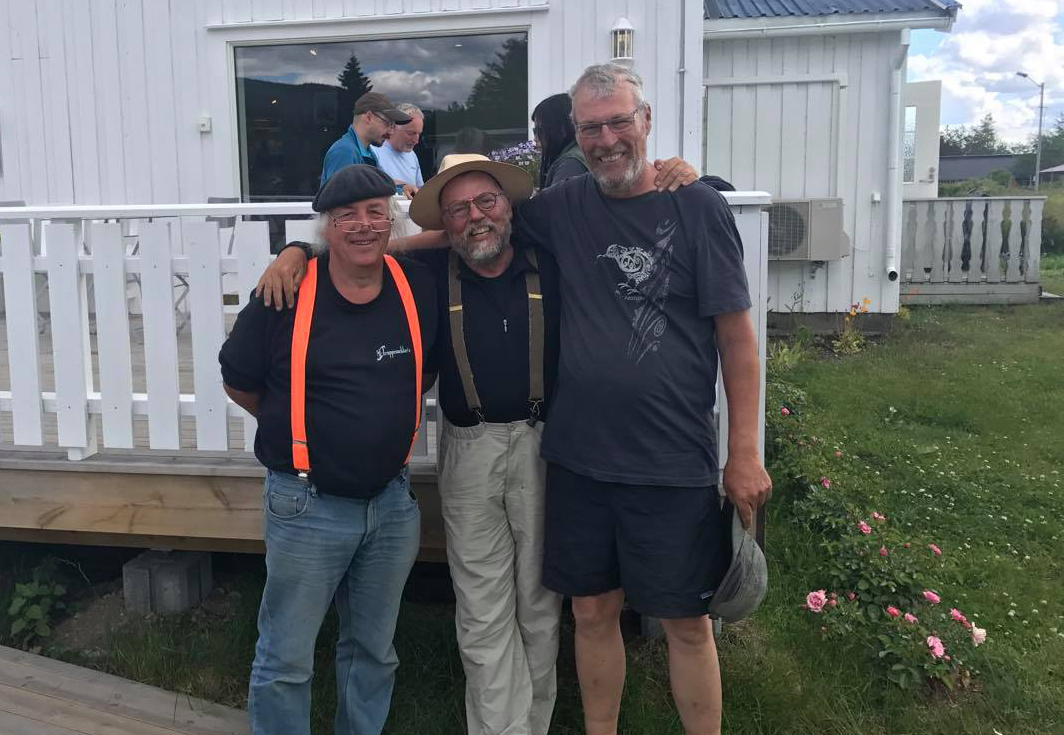
Staffan Lindström, Henrik Leth and Danish split cane rod, building legend, Bjarne Fries, photographed at Rena Fiske Camp.
Another of the great. Scandinavian fly fishers is no longer among us. On the morning of January 17th, Staffan Lindström passed away. Not long ago he was diagnosed with cancer to which he finally succumbed. Staffan was an innovator, an excellent caster and fisherman, trout bum, outdoors man in the word’s truest meaning and a giving person.


